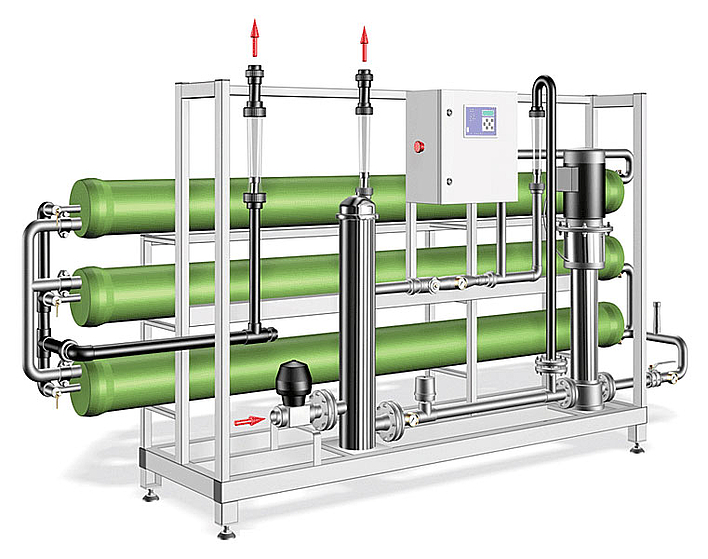Reverse osmosis is a pressure-driven physical process for separating liquids and substances dissolved in them.
They are used in particular at saltwater desalination, water softening or at process water and ultrapure water preparation.
In the process the water to be desalinated is pressed under partially very high pressure through a semi-permeable membrane. The salts are concentrated before the membrane, while almost completely demineralised water remains after the membrane. Reverse osmosis membranes have to withstand high pressures. In order to avoid crystallising in the membranes, so called anti-scalings are dosed. A protective filter or an ultrafiltration stage is usually positioned upstream in order to protect and relieve reverse osmosis. RO systems are in part are structured in two stages.
In the context of drinking water treatment, nanofiltration or low-pressure reverse osmosis (LPRO) are primarily used for central softening. The process reliably holds back all larger molecules and trace substances. When softening, the desired target hardness is set by bypass regulation. The carbon dioxide in equilibrium remains in the water and must be expelled through a degassing unit after nanofiltration (see Deacidification).
Send us your requirements and we would be very happy to help you.





